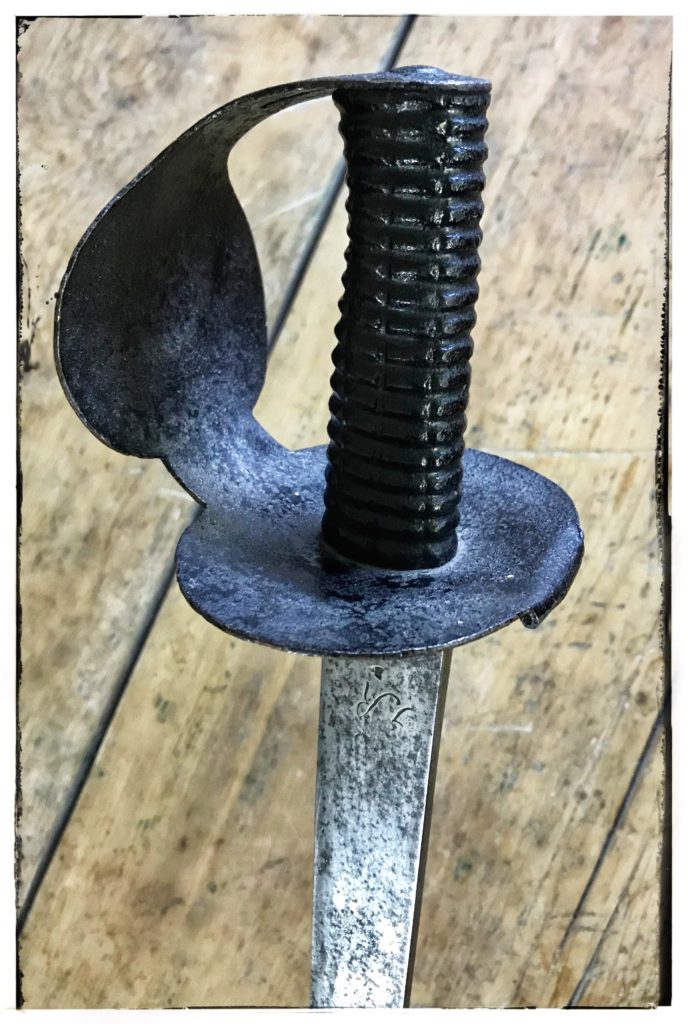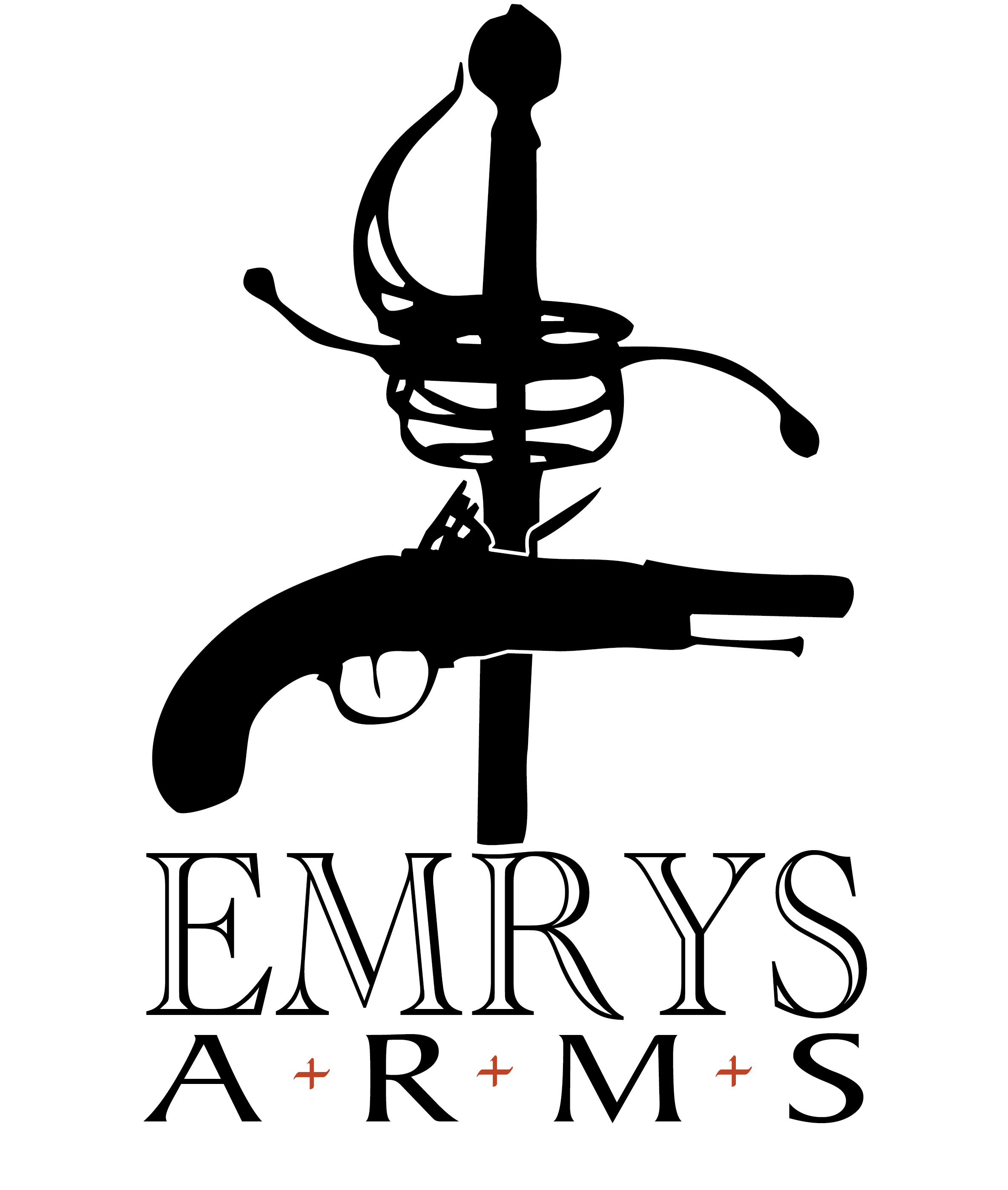| Collection #: | 2020.016 |
|---|---|
| Type: | Naval Cutlass |
| Nationality: | British |
| Pattern: | 1804 |
| Date: | 1808 - 1814 |
| Hilt: | Black painted steel |
| Blade Length: | 74.5cm (29 1/4") |
| Blade Width: | 3.9cm (1.5") |
| Overall Length: | 86cm (33 3/4") |
| Maker: | John Gill |

A stout, sharp, solid dependable blade. That is what this is. Nothing fancy. With no pommel; a ribbed, cast iron grip; a sheet iron or steel guard composed of two discs, one around the blade and one integrated into the knuckleguard tapering into a little more of a heart shape toward the blade tang. This has lead it to sometimes be known as the figure of eight guard; the guard wraps up and is riveted directly to the tang of the blade. On most examples the blade is straight and flat with no fuller, though some few are found with a single narrow fuller just below the spine. This narrow fuller style in British blades had mostly died out by 1800 and therefor these examples may in fact be refurbished pre-1804 cutlasses which in initial appearance were quite similar, the most obvious difference being the smooth tubular grip on the older model.
There are some suspicions as to why the blade was left unfullered as fullering typically strengthened the blade. “It may be that this was done for cheapness, but it is possible that consideration was being given to the secondary role of the cutlass in cutting through nets and cordage to get at the enemy, severing cordage on which the enemy depended and cutting away fallen rope and canvas in one’s own ship. Here the added weight of a blade without a groove would make it a more useful tool for these purposes”.
– McGrath, John & Barton, Mark, British Naval Swords & Swordsmanship, pages 27 – 28.
The origin of this sword first appears “on 30 May 1804 [when] the Board of Ordnance ordered 10,000 Swords for Sea Service to be made to a new pattern suggested by Henry Osborn. The price was 4/10d [4 shillings and 10 pence] each without the scabbard. No details of design have been traced, neither has the Admiralty’s agreement to the new pattern. It is evident that this cutlass had the two-disc hilt and a straight 29in. flat blade. The grip was of cast iron with both vertical and horizontal grooves”.
– May, Commander W.E., RN & Annis, P.G.W., Swords for Sea Service (Volume One), page 79.
The name of John Gill is marked to the spine of the blade on this example. He was not part of the initial order of 10,000, but was part of a subsequent order on the 30 September 1808 when 20,000 more were ordered. Gill is listed as supplying 3400 of them (Swords for Sea Service Vol. One, page 79). This helps us in the dating of this blade as it cannot be earlier than 1808.
This example is in remarkably good condition. It feels as solid and firm in the hand as the day it was made. The blade does show evidence of having been cleaned, but that does allow us to make out the markings on the blade a little easier. The right side of the blade is marked with the Royal Cypher of King George III to denote Government ownership. It is also marked with a crown over 7( or 1?) inspectors mark. As mentioned earlier, the spine of the blade is marked I. Gill for John Gill and the left side of the blade contains no further markings. There is some stabilized pitting to the blade and in particular around the last 2cm to the tip. All in all, a quality piece that you would be hard pressed to find a better example.
For further reading on this pattern of cutlass and others, in addition to the two books I have quoted here, a third excellent (but out of print) book on the topic is William Gilkerson’s Boarders Away. Information on this specific pattern can be found on pages 84 – 85.

